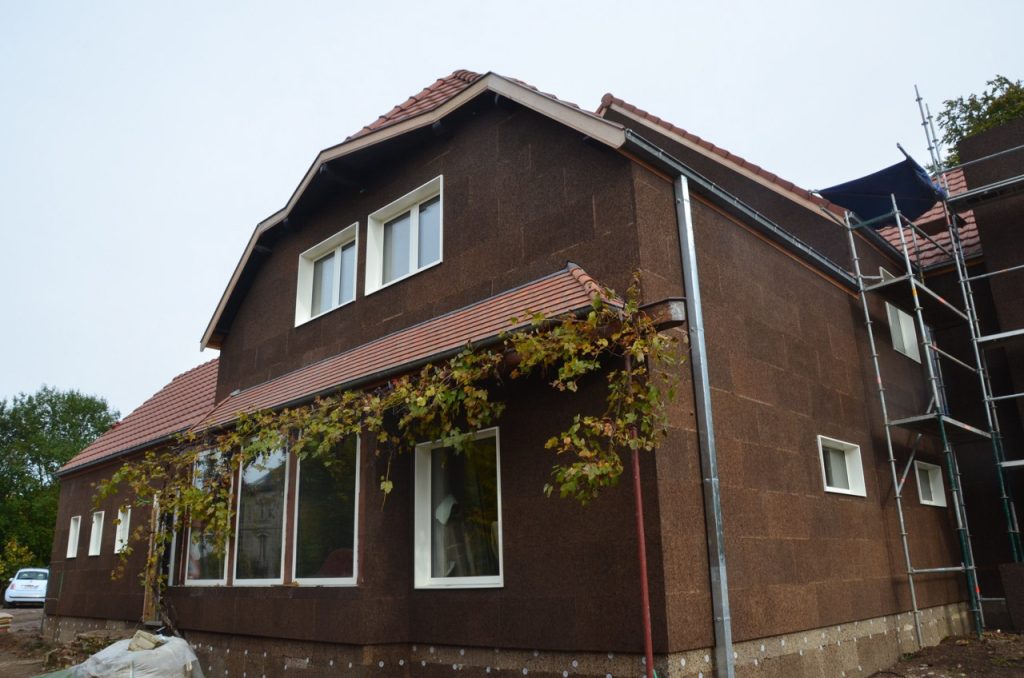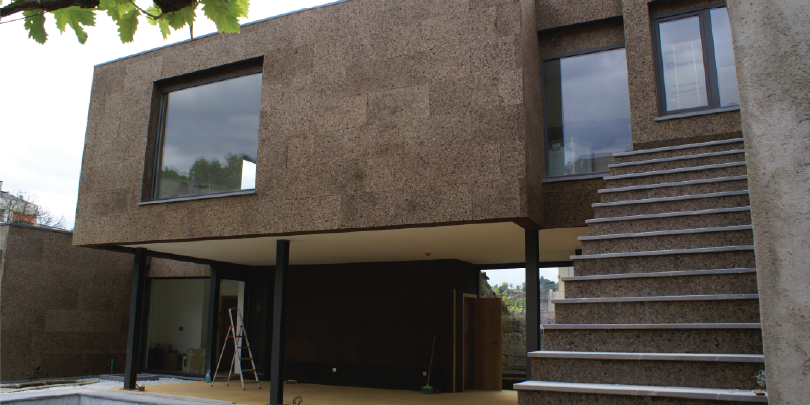The traditional way of using expanded cork is to cover external wall with it and then plaster over it, but increasing numbers of home builders are so enchanted with expanded cork that they want to use it as external cladding. Here we are going to talk about a few issues that you should be aware of.
The first thing you really need to consider is how robust the expanded cork will be. The granules in expanded cork are only held together by the resin that the cork naturally contains, so when the cork panels get continuously brushed against or if they are impacted against, they will tend to give up granules and the panels can begin to look scruffy – it is not that it is particularly weak, just that continuous bushing or occasional heavy impacts will eventually take their toll.
The first thing to consider is that standard density cork will not be as strong as higher density cork, so that is perhaps the simplest initial step to take. Next you should consider that exposed corners are the most vulnerable point of the expanded cork cladding – a corner that will be regularly brushed against by people walking past it will probably need some kind of protection (like a wooden batten for example). Expanded cork is a fabulous product in so many ways, but you have to remember that whilst it may be very durable and low maintenance it is not as robust as some cladding when it comes to physical impacts, so you need to try and minimise them.
With regard to the aesthetics of the expanded cork cladding, you will need to decide if you are looking for a smooth and sleek finish or a more rough, organic one. For smooth and sleek, you need to go with REV expanded cork and for a more rough and ready look you can use normal high density. REV expanded cork is made in the same way as standard expanded cork, but the granules that are used for it are more carefully selected so that the granule size is more uniform and that the more woody granules are removed (the woody granules have more of a tendency to burn during production and so can come out on the finished product as blacker). Finally, the REV expanded cork is sanded to further smoothen the surface (although standard expanded can also be sanded for an additional cost). Put together this means that REV gives a more elegant look to the cladding and that is why it tends to be used more than standard density. You will end up paying around 35% more for REV than high density expanded however.

When using expanded cork is used for cladding, generally using ship-lap panels is advised as this allows you to hide the fixing screws under the ship-lap to give a much smoother finish. Ship-lap is available on REV or standard expanded cork panels at a cost of an additional €3 per m2, but is only available on panel thicknesses of between 40 and 100mm.
One final thing to consider is the colour of the expanded cork – each panel will have a slightly different colour, so you will always get a patchwork feel to the cladding (even with the REV panels). Furthermore, the expanded cork will gradually bleach in the sun over the years which will lighten the colour – the obviously happens a lot faster in sunnier countries, but you will find that different sides of the house will bleach at different speeds according to their aspect. This natural ageing process and the natural variations from panel to panel are really part of the charm of using expanded cork as cladding, which is why it is not the right product for everyone!
If you need some further guidance on which kind of expanded cork you should use for your house, please contact us for more information.








